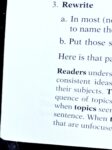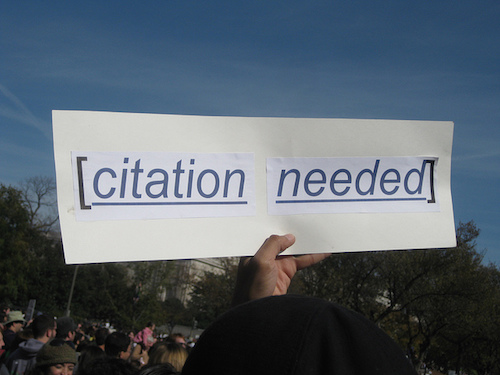Sometimes the words don’t fit on the laid-out page. Such page overruns present a copyfitting challenge! Hopefully, at this point, we are talking about cutting single words or a couple lines of text that don’t fit, rather than dozens of pages of content.
With highly graphic layouts found in magazines and guidebooks, for example, copy fitting can come down to cutting a single word to make the copy fit. In narrative works, it might mean cutting scenes or anecdotes. Here are some approaches to making it fit.
Why Copy Might Not Fit
It’s hard to think of a project that doesn’t have a limit on length, whether because of limits to page count or reader patience (or time or product price). Making the copy fit within those limits happens at two stages: before layout (when the editor tries to massage the manuscript close to the target word count) and after layout (when the editor tweaks wording to cut page overruns).
Print Costs
Many print products are still influenced by the size of a signature: the 16-page fold that is produced in the printing process. You might be asked to cut lines rather than incurring the cost of another eight pages to accommodate a just a few lines of text.

Layout constraints
Good production starts with the end in mind. Know whether you are creating a magazine-like layout with tight word counts for each element, a prose work with target chapter lengths, or a narrative with no graphic elements.
In highly graphic products such as brochures and magazines, it’s not hard to see where a few extra words might mess up the whole layout. Elements of design matter for readability as well as aesthetics. As much as it might pain we lovers of words, it simply is not good practice to shrink all images to thumbnails (for example) to fit in those precious dozen words that overflowed the template.
Estimate the word count either by using dummy text such as lorem ipsum or by counting words in a similar work:

- Count the words in 7 random lines of text.
- Find the average number or words per line.
- Measure the number of lines in an inch of text.
- Measure the total length of the text.
- Multiply: average words × lines per inch × inches of copy.
Communicate these targets to the writer and to the editor.
Limits within the Genre
Each type of work has somewhat of a standard length. Picture books aren’t 80 pages and adult fiction isn’t 150 pages. These standards can be the first limiting factor. We look at typical word counts of specific categories in another post.
Some products need to fit a certain time: If the training session will last 60 minutes, it does a disservice to give the user or presenter 180 minutes of material to cover. If the program is to be read over intermission, the message won’t get across if it’s 200 pages long. If the executive only has time to read a summary of the highlights, she’ll get annoyed at a complete rehashing of the whole report. Time matters as well as “printing” and production costs!
It’s best to set these expectations before writing! “It takes as many words as it takes” is something I’ve heard from both idealistic writers and project leads. But that is how I ended up with a 50 page manuscript for a chapter that had been allotted 16 pages. The project lead thought he was being generous and demonstrating support for artistic integrity when he refused to tell the writer how much to write. “I don’t like to confine my writers,” is what he told me. But having to cut three-quarters of that writer’s hard work proved to be more than the author could bear, and I (the editor) had to do it.
Where to Find Easy Cuts
Cutting the last few words that actually overran the layout is an unlikely solution. Pick first on eliminating the widows. Look for paragraphs with only one or two words on the last line and make these easy cuts somewhere in that paragraph:
- Substitute a short word for a long, erudite one. (Ideally, without erasing the author’s voice.)
- Eliminate passive prose and unnecessary “thats” and “will bes.”
- Omit throat-clearing phrases such as “It should be noted that.”

If changes there don’t rescue the overrun, look for an example or case study that might be tightened or eliminated. Maybe there is a quote that can be dropped.
Just be cautious that any actual content that gets cut isn’t referred to elsewhere in the text.
How NOT to fit copy
Sometimes, on occasion, in very small amounts, a designer/compositor might be asked to reduce the spacing between words or lines of type to make some thing fit. It the most desperate circumstances, they might even be asked to extend a margin. But I do NOT recommend this as a common practice.
Photo of strips torn from a book by The Shopping Sherpa, used under CC BY-ND 2.0 license. Photo of circle pages in a book by Denise Chan, used under CC BY-SA 2.0 license.


